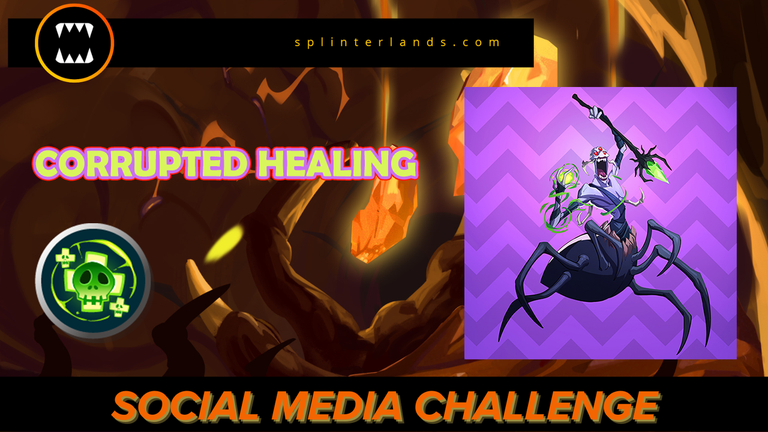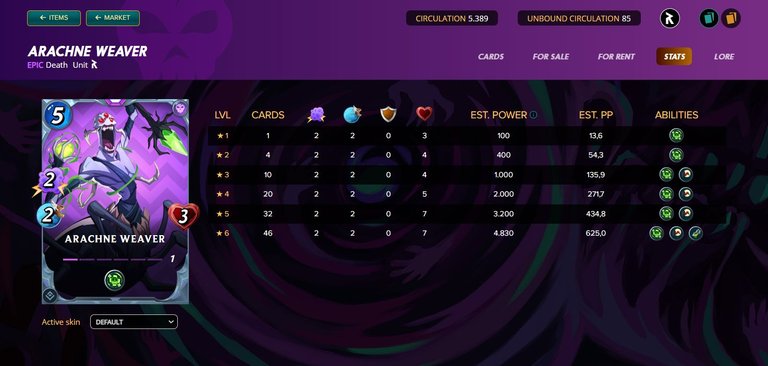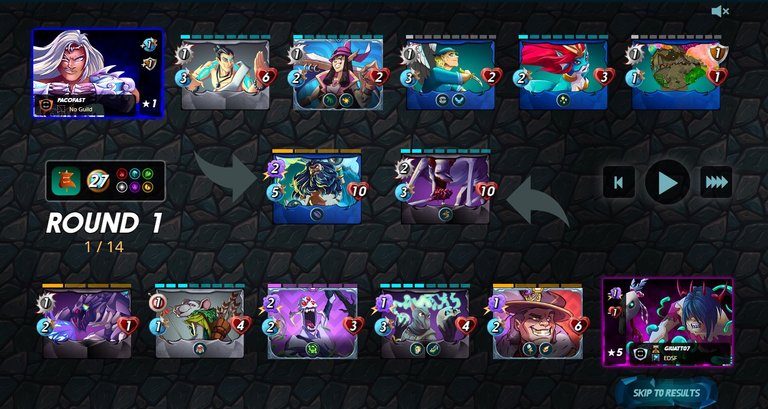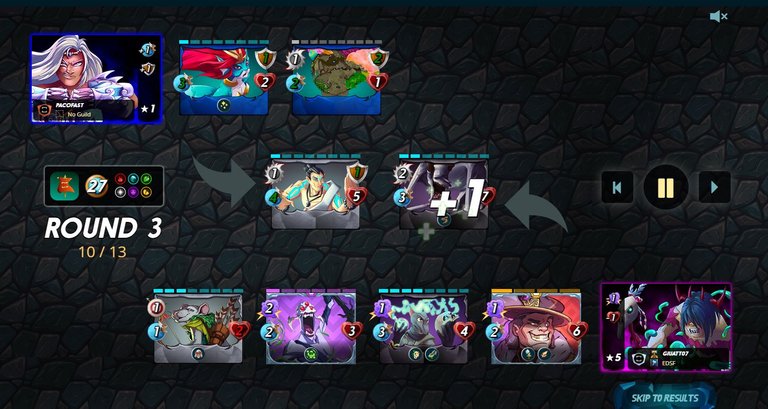
Hello to all Splinterlands friends!!!
We continue our journey of discovering the new Rewards cards, aiming to explore all the many innovations they bring to the game mechanics: not only do we have Debilitations, which I’ve already talked about and will definitely cover more in the future, but there are also new abilities that need to be studied very carefully. These abilities are different from traditional ones because they bring great benefits to the team or the monster that possesses them, but they also come with a price to pay, so you must calculate carefully whether they’re worth using in a particular match.
And that's what we'll be looking at in this week's Splinterlands Social Media Challenge!!!

The monster I want to talk about this week is Arachne Weaver:
A card from the Death element, costing 5 mana, and starting at level 1, it’s very fragile in terms of Health with only 3. However, it has 2 points in both Magic and Speed, which are quite good. The real novelty though, is its ability:

Corrupted Healing: with this ability, Arachne regenerates the Health points of its teammates at the end of each round (rounded down). However, it comes at the cost of reducing the Maximum Health of the healed card by 1 point each time a card is healed.
This forces a careful calculation because the price of reducing the Max Health of the cards is quite steep, especially in the long term. Therefore, this ability is best used in battles that are expected to be short.
I had to re-read this several times to fully understand how it works, but let’s see a field test in this battle at the following link: https://splinterlands.com/?p=battle&id=sl_38509e0d7e3a80ebbf11748b936c87c9

In this battle, I deployed a classic Death group summoner, Thaddius Brood, while introducing two innovative cards like Baron Fyatt, a promo card from a recently concluded event, and Arachne Weaver, the card we're discussing in this post.
My opponent, on the other hand, deployed a typical Water element team, with Kelya Frendul as summoner and the usual Djinn Oshannus as the Tank.

As an example, in Round 3, Arachne’s Corrupted Healing ability gave +1 Health to my Tank card, Cursed Windeku, but over the course of 3 Rounds, it also reduced its Max Health from 10 down to 7.
So, we can say that Corrupted Healing works well with cards that have very high Health stats and that take a lot of hits. For example, a card with 10 Max Health, reduced to just 1 point, will have its Health regenerated by 70%, but its Max Health will end up at 9.
This is an interesting but very difficult ability to interpret; it requires a lot of study and practice to master fully.
If you want to sign up for Splinterlands and haven’t done so yet, you can use my referral: https://splinterlands.com?ref=giuatt07
Thanks for your attention, and see you next time.


Ciao a tutti amici di Splinterlands!!!
Continuiamo il nostro percorso di scoperta della nuove carte Rewards, con l'intento di scoprire tutte le tante novità che portano nei meccanismi di gioco: non solo abbiamo le Debilitations, di cui ho parlato, ma sicuramente parlerò molto di più anche prossimamente, ma ci sono nuove abilità , che vanno studiate molto attentamente, anche perchè sono diverse dalle abilità tradizionali, in quanto portano grandi benefici alla squadra o al mostro che le possiede, ma presentato anche un prezzo da pagare, e quindi, bisogna calcolare con attenzione se convengono in quella determinata partita.
Ed è quello che vedremo nel Splinterlands Social Media Challenge di questa settimana !!!

Il mostro di cui voglio parlare questa settimana è Arachne Weaver:
Carta dell'elemento Death , costa 5 mana, a partire dal livello 1 si presenta molto fragile in termini di Health con solo 3, molto buono sono i sui 2 punti sia di Magic che di Speed, ma la grande novità è questa abilità

Corrupted Healing: con questa abilità Arachne rigenera ,ad ogni Round, i punti Health dei propri compagni di squadra, arrotondato per difetto, però pagando il prezzo di ridurre di 1 punto il Massimo quantitativo di Health ogni volta che una carta viene curata.
Questo pone un attento calcolo, perchè il prezzo da pagare, ovvero di ridurre il Max Health delle carte, è molto alto, soprattutto a lungo termine, quindi questa abilità è preferibile da usare nelle sfide che , si pensa, possano durare poco.
L'ho dovuto rileggere varie volte per cercare di capire a fondo come funziona, ma cerchiamo di vedere una prova sul campo, in questa mia partita a questo link: https://splinterlands.com/?p=battle&id=sl_38509e0d7e3a80ebbf11748b936c87c9

In questa sfida, ho schierato un classico evocatore del gruppo Death, ovvero Thaddius Brood, ma mettendo due carte innovative, come Baron Fyatt, carte promo di un evento appena concluso, e Arachne Weaver, carte di cui stiamo parlando in questo post.
Invece il mio avversario, ha schierato una tipica squadra dell'elemento Water, con Kelya Frendul come evocatore, e in posizione Tank il solito Djinn Oshannus.

Vediamo , per esempio, che al Round 3, l'abilità Corrupted Healing di Arachne ha dato un +1 di Health alla mia carta in posizione Tank, ovvero Cursed Windeku, ma nell'arco dei 3 Round ha portato anche il suo Max Health dai 10 iniziali, giù a 7 punti.
Quindi possiamo anche dire che Corrupted Healing rende bene con carte con stats di Health molto alti, e che ricevono tanti colpi, per esempio una carta con 10 di Max Health, che finisce a 1 solo punto, il suo punteggio di Health viene rigenerato per il 70%, per il suo Max Health finisce a 9.
Questa è un'abilità interssante ma molto difficile da interpretare, necessita di molto studio e pratica per comprenderla al meglio.
Se volete iscrivervi a Splinterlands , e non lo avete già fatto, potete usare il mio referral: https://splinterlands.com?ref=giuatt07
Grazie dell'attenzione e alla prossima.



 )
)




